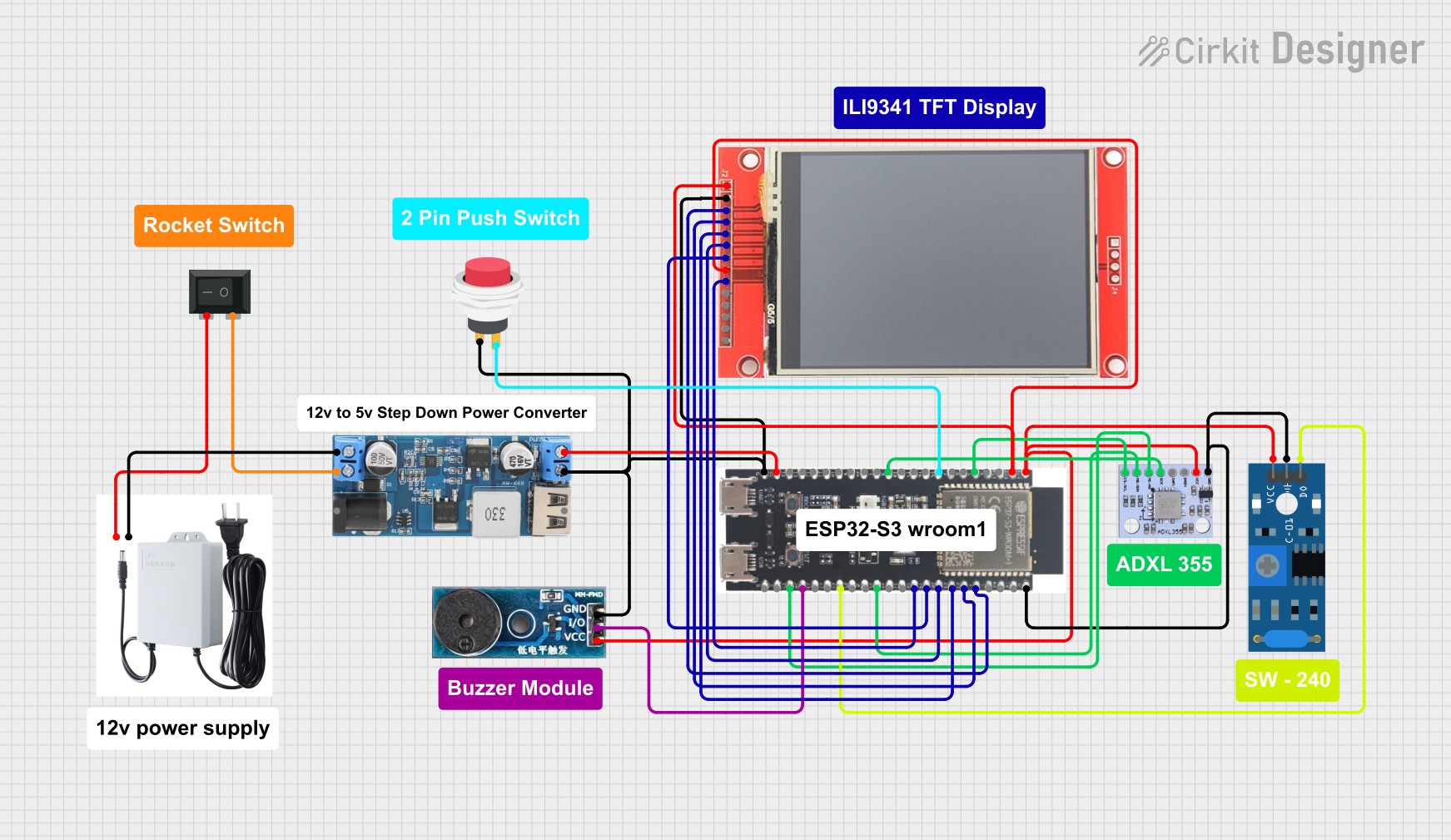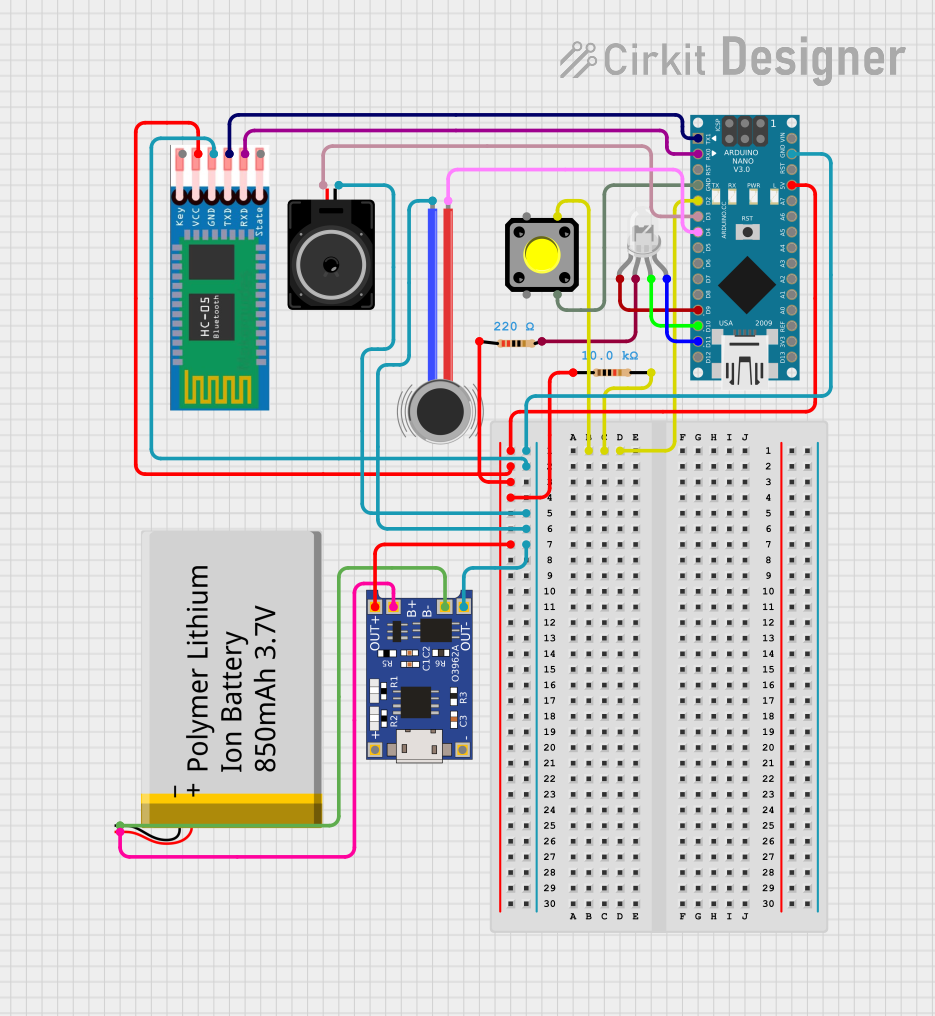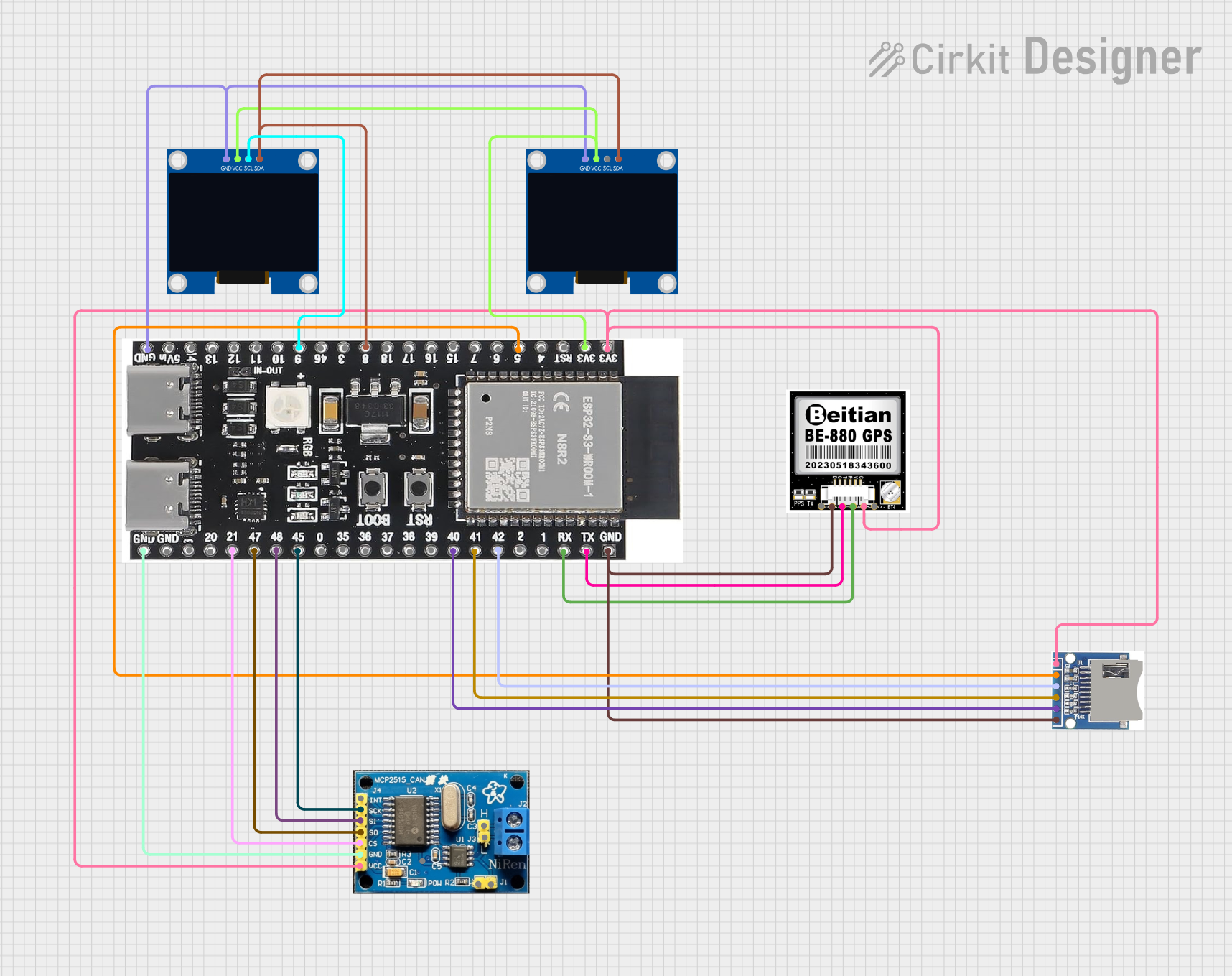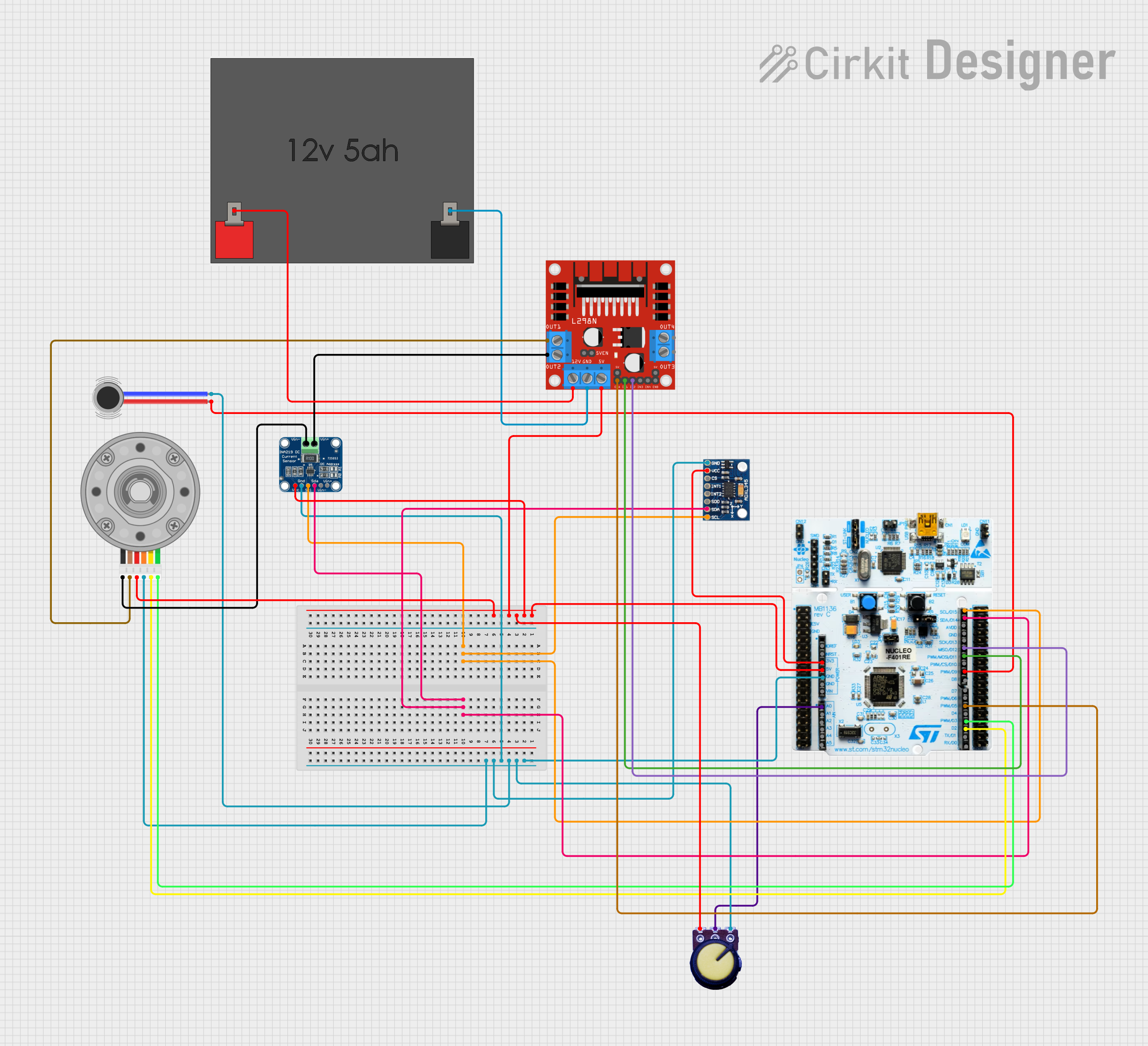
How to Use SXV300: Examples, Pinouts, and Specs

 Design with SXV300 in Cirkit Designer
Design with SXV300 in Cirkit DesignerIntroduction
The SXV300, manufactured by SXM, is a high-performance, low-noise operational amplifier designed for precision signal processing applications. It is engineered to deliver exceptional performance in demanding environments, with features such as wide bandwidth, low distortion, and a high slew rate. These characteristics make the SXV300 ideal for applications in audio systems, instrumentation, and control systems where signal integrity and accuracy are critical.
Explore Projects Built with SXV300

 Open Project in Cirkit Designer
Open Project in Cirkit Designer
 Open Project in Cirkit Designer
Open Project in Cirkit Designer
 Open Project in Cirkit Designer
Open Project in Cirkit Designer
 Open Project in Cirkit Designer
Open Project in Cirkit DesignerExplore Projects Built with SXV300

 Open Project in Cirkit Designer
Open Project in Cirkit Designer
 Open Project in Cirkit Designer
Open Project in Cirkit Designer
 Open Project in Cirkit Designer
Open Project in Cirkit Designer
 Open Project in Cirkit Designer
Open Project in Cirkit DesignerCommon Applications
- Audio Systems: High-fidelity audio amplification and processing.
- Instrumentation: Precision measurement and signal conditioning.
- Control Systems: Feedback control loops and signal stabilization.
- Medical Devices: Low-noise amplification for sensitive sensors.
- Data Acquisition Systems: High-speed and accurate signal processing.
Technical Specifications
Key Specifications
| Parameter | Value |
|---|---|
| Supply Voltage Range | ±2.5V to ±18V |
| Input Offset Voltage | 0.5 mV (typical) |
| Input Bias Current | 10 nA (typical) |
| Gain Bandwidth Product | 10 MHz |
| Slew Rate | 20 V/µs |
| Total Harmonic Distortion (THD) | 0.0003% (typical) |
| Output Voltage Swing | ±(Vcc - 1.5V) |
| Operating Temperature | -40°C to +85°C |
| Package Options | 8-pin DIP, 8-pin SOIC |
Pin Configuration and Descriptions
The SXV300 is available in an 8-pin package. The pinout and descriptions are as follows:
8-Pin DIP/SOIC Pinout
| Pin Number | Name | Description |
|---|---|---|
| 1 | Offset Null | Used for offset voltage adjustment (optional). |
| 2 | Inverting Input (-) | Inverting input terminal for the op-amp. |
| 3 | Non-Inverting Input (+) | Non-inverting input terminal. |
| 4 | V- (GND) | Negative power supply or ground. |
| 5 | Offset Null | Used for offset voltage adjustment (optional). |
| 6 | Output | Output terminal of the op-amp. |
| 7 | V+ | Positive power supply. |
| 8 | NC (No Connect) | Not connected internally. |
Usage Instructions
Using the SXV300 in a Circuit
- Power Supply: Connect the SXV300 to a dual power supply (e.g., ±12V) or a single supply (e.g., 5V and GND) depending on your application. Ensure the supply voltage is within the specified range (±2.5V to ±18V).
- Input Connections:
- Connect the signal source to the inverting (-) or non-inverting (+) input, depending on the desired configuration (e.g., inverting or non-inverting amplifier).
- Use appropriate resistors to set the gain of the amplifier.
- Output Load: Ensure the load connected to the output does not exceed the current drive capability of the SXV300.
- Offset Adjustment: If precise offset voltage adjustment is required, connect a potentiometer between the offset null pins (1 and 5) and adjust as needed.
- Bypass Capacitors: Place decoupling capacitors (e.g., 0.1 µF ceramic and 10 µF electrolytic) close to the power supply pins to reduce noise and improve stability.
Example Circuit: Non-Inverting Amplifier
Below is an example of using the SXV300 as a non-inverting amplifier with an Arduino UNO for signal processing.
Circuit Diagram
- V+: Connect to +12V.
- V-: Connect to -12V.
- Non-Inverting Input (+): Connect to the signal source.
- Inverting Input (-): Connect to a resistor divider for gain setting.
- Output: Connect to the Arduino analog input pin (e.g., A0).
Arduino Code Example
// Example: Reading amplified signal from SXV300 with Arduino UNO
const int analogPin = A0; // Analog pin connected to SXV300 output
void setup() {
Serial.begin(9600); // Initialize serial communication
}
void loop() {
int sensorValue = analogRead(analogPin); // Read the analog value
float voltage = sensorValue * (5.0 / 1023.0); // Convert to voltage
Serial.print("Voltage: ");
Serial.println(voltage); // Print the voltage to the Serial Monitor
delay(500); // Wait for 500ms before the next reading
}
Best Practices
- Use precision resistors for gain-setting to ensure accurate amplification.
- Avoid exceeding the input voltage range to prevent damage to the op-amp.
- Use proper grounding techniques to minimize noise and interference.
- For high-frequency applications, consider adding a small capacitor across the feedback resistor to improve stability.
Troubleshooting and FAQs
Common Issues and Solutions
No Output Signal:
- Verify the power supply connections and ensure the voltage is within the specified range.
- Check the input signal and ensure it is within the input voltage range of the op-amp.
- Inspect the circuit for loose connections or incorrect wiring.
Distorted Output:
- Ensure the load connected to the output does not exceed the op-amp's drive capability.
- Check for proper decoupling capacitors near the power supply pins.
- Verify that the gain-setting resistors are correctly calculated and connected.
High Noise Levels:
- Use shielded cables for input signals to reduce external interference.
- Ensure proper grounding and minimize ground loops in the circuit.
- Add bypass capacitors to the power supply lines.
Offset Voltage Too High:
- Use the offset null pins to adjust and minimize the offset voltage.
- Ensure the input bias current is properly accounted for in the circuit design.
FAQs
Q1: Can the SXV300 operate with a single power supply?
A1: Yes, the SXV300 can operate with a single supply (e.g., 5V and GND). However, ensure the input and output signals are biased appropriately within the operating range.
Q2: What is the maximum gain I can achieve with the SXV300?
A2: The maximum gain depends on the application and stability requirements. For high gains, ensure proper compensation to avoid oscillations.
Q3: Is the SXV300 suitable for audio applications?
A3: Yes, the SXV300's low noise, low distortion, and wide bandwidth make it an excellent choice for high-fidelity audio applications.
Q4: How do I calculate the gain for a non-inverting amplifier configuration?
A4: The gain is calculated as:
Gain = 1 + (Rf / Rin)
Where Rf is the feedback resistor and Rin is the resistor connected to the inverting input.
This concludes the documentation for the SXV300 operational amplifier. For further assistance, refer to the manufacturer's datasheet or contact SXM support.